When it comes to bird species, the first thing that comes to mind is undoubtedly their flying ability. The flight speed of birds is extremely important in their survival competition. In this article, we will share with you the top fastest flying bird species in the world.
Fastest flying bird species video
Please refer to the list of the fastest flying bird species in the world below.
1. Common Swift
This bird can fly at a speed of 70 miles per hour and on average, it can cover up to 125,000 miles in a year. Common Swift is a medium-sized bird with curved wings and a forked tail. They spend spring and summer in their natural breeding territories in Europe and Asia, and migrate to the southern part of Africa to spend winter.
Interestingly, this bird seems to have two different horizontal flight modes. During normal flight, it prefers to maintain a steady speed between 22 to 26 miles per hour. However, during breeding season, the Common Swift seems to have an entirely new set of flight gear.
When trying to court a mate, this bird can reach a maximum flying speed of about 70 miles per hour by changing the shape of its wings and aerodynamic efficiency, even while ascending into the air. These social displays are called screaming parties because of the ear-piercing sounds they make while flying.
The truly amazing thing about the Common Swift is that it holds the record for the longest uninterrupted flight. This winged creature can fly continuously for up to ten months. Scientists came to this conclusion with the help of iPhone technology. By attaching light sensors and accelerometers to regular movements, they were able to track their migration routes. Among the birds that were tracked, three of them ran non-stop for 10 months. These birds spent 99% of their time in the air. They did everything while flying, such as eating, mating, and even napping while landing.
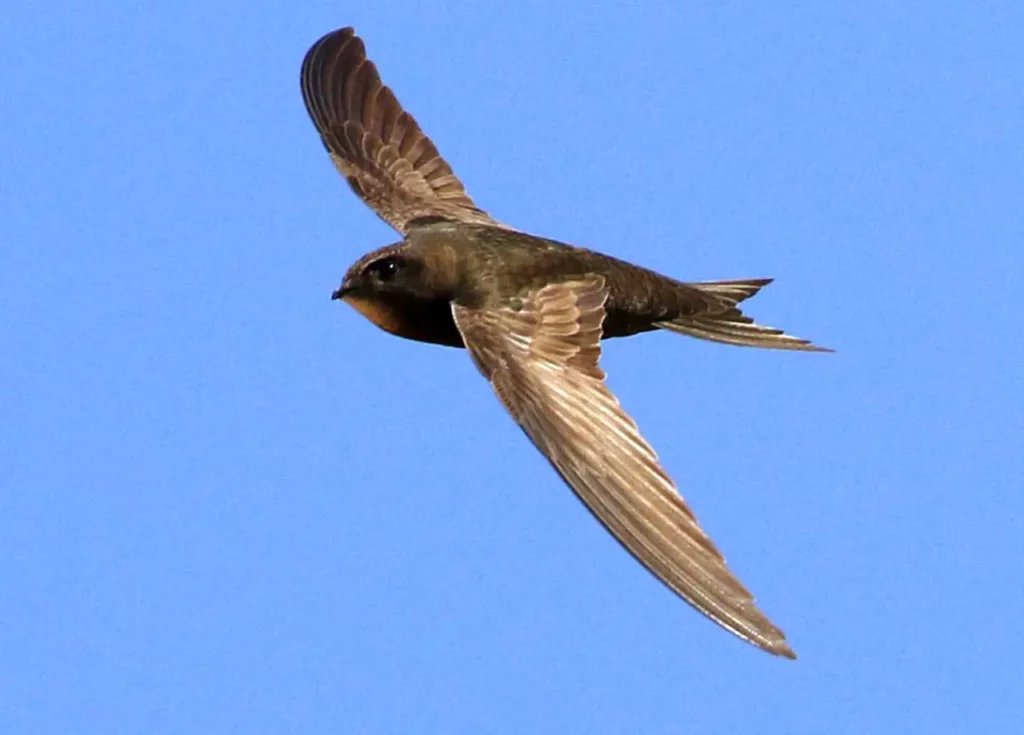
2. Red-breasted Merganser
Like many other waterfowl species, it prefers to breed in the northern climate and then migrate to warmer coastal areas in the winter. A study recorded the maximum flight speed of the red-breasted merganser at about 80 miles per hour. When factoring out the wind, the bird actually reaches a speed of around 100 miles per hour. This makes it the fastest duck in the world. However, it can only maintain this speed for a very short period of time.
The red-breasted merganser is likened to a diver, searching beneath the surface of the water for fish, frogs, crustaceans, and even insects. Sometimes, it even collaborates with other birds to forage, swimming around and taking turns diving under the water to catch prey with its saw-toothed bill.
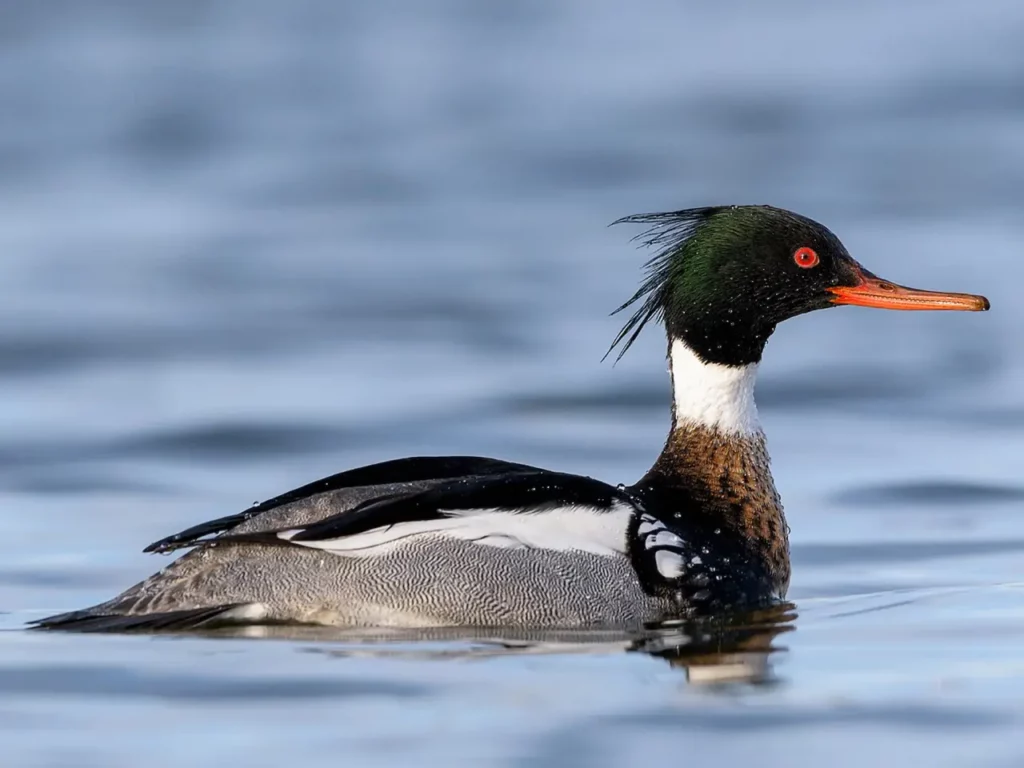
3. Eurasian Hobby
The Eurasian Hobby is a small, agile bird of prey that breeds in Europe and Asia, then migrates south to the tip of Africa during the winter. This bird of prey has a very rapid stooping motion, and can reach speeds of nearly 100 miles per hour when diving to catch its prey. But perhaps the most notable aspect of this bird is its exquisite aerial maneuverability. Its agility is so refined that males can even transfer food to females in mid-flight as part of their courtship display. With its beautiful appearance and speedy diving ability, the Eurasian Hobby hunts while in flight, targeting small bats, swifts, and other birds with its speed advantage in the world of birds of prey.
You can mainly encounter this bird species in open spaces, such as farmland and wetlands. They search for food in the morning or evening. The Eurasian Hobby also has a known preference for flying over water areas. When nesting, this bird species is a parasite. They will find empty nests made by other bird species, such as raven.
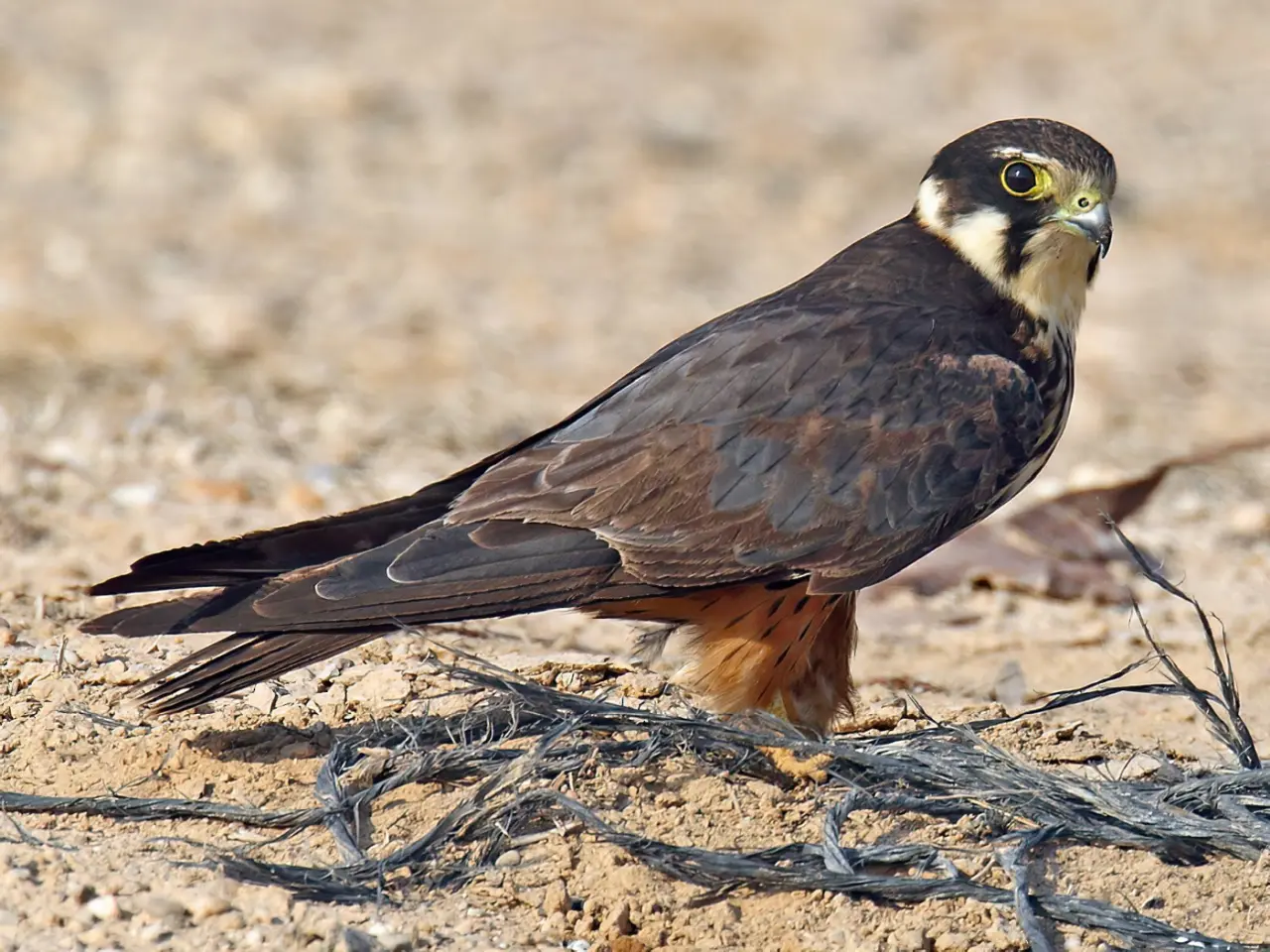
4. White-throated Needletail
The name of the White-throated Needletail bird is derived from its sharply pointed tail feathers, which are actually large swift feathers. Due to its spiky appearance, it was previously known as the Spine-tailed Swift and sometimes even nicknamed the Storm Bird. Originating from East Asia, it spends much of its time soaring through the sky, feeding on small flying insects. It prefers to live in rocky outcrops, forests, and hills, nesting inside crevices or on precarious rock ledges. This bird is able to cling to vertical surfaces without any issues.
Based on one study, it is said to be capable of reaching speeds of around 105 miles per hour. However, according to the BBC, the actual methods used to measure the speed of this bird have not been published, so this figure has not been fully confirmed. It is known as the fastest flying bird when not diving. Its white-throated tail feathers have very large and robust wings. For this reason, it can be easily mistaken for a bird of prey, but it prefers to fly along most of the time, feeding on insects while in flight.
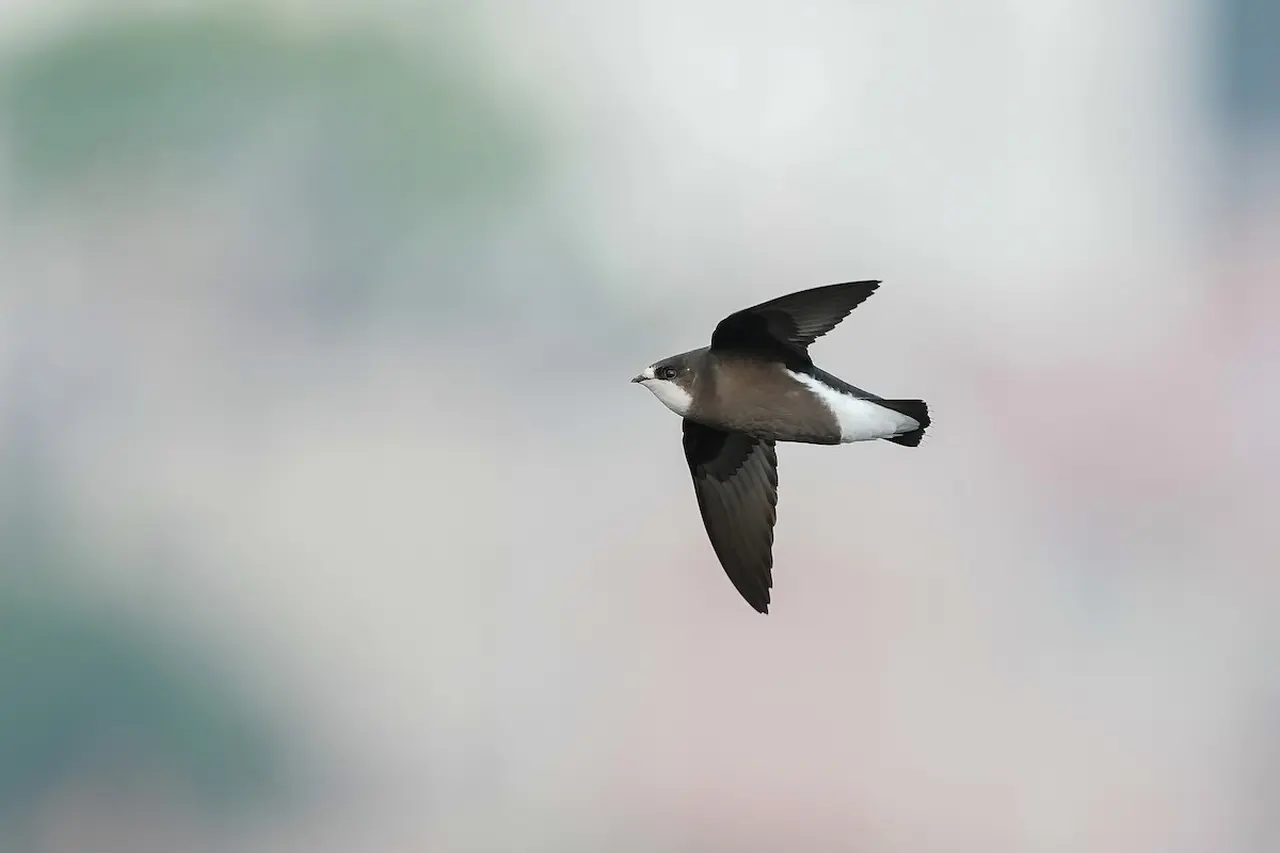
5. Red-Tailed Hawk
They are not the fastest flying bird on the list of fast-flying birds. They can only reach a normal flying speed of about 20 to 40 mph. But when they spot their prey, these birds suddenly take action and dive down at speeds of over 120 mph.
Red-tailed hawks are opportunistic hunters, they will eat almost anything, but their favorite meal seems to be rodents and other small mammals. They are supported in this effort by their keen eyesight (about eight times stronger than human vision), which can detect a mouse from about 100 feet away.
Snakes and rodents, beware, because the Red-tailed Hawk’s talons are quite formidable, measuring 1.33 inches in length. It’s not uncommon to see a Red-tailed Hawk perched on a highway or even circling your neighborhood in search of its next meal. With a wingspan of over 4 feet, they are experts at soaring. Along with their sharp eyesight, agility, and large size, the Red-tailed Hawk is known for its piercing screech. In fact, their call is so common that it is often used in television shows and movies.
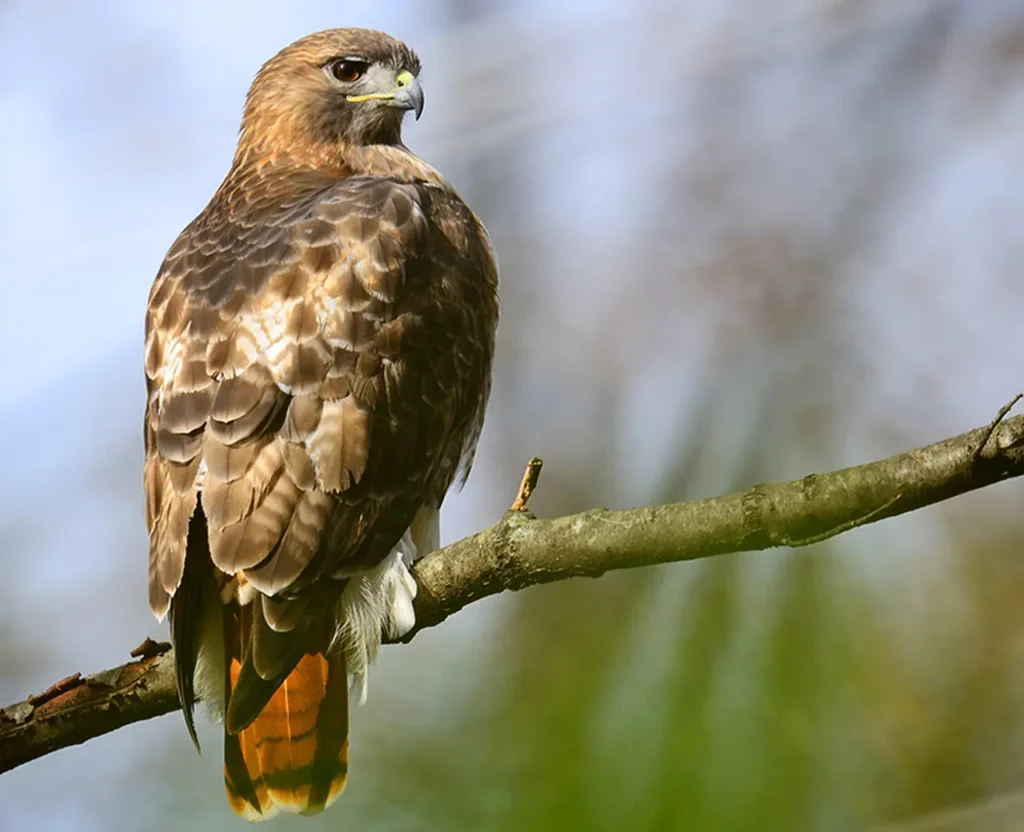
6. Gyrfalcon
Dubbed the largest falcon in the world, the Gyrfalcon is one of the few birds that can breed along the frigid Arctic coast. It is also the official mascot of the United States Air Force Academy.
In addition, they are also one of the fastest birds measured in terms of maintaining a stable flying speed. While some other birds may exceed their speed in short bursts, the Gyrfalcon can maintain an average speed of about 50 to 68 mph over a considerable distance without slowing down or stopping, something that few other species can do.
This bird is known to hunt alone until the breeding season approaches. Then, it makes way for a special someone in its world, and remains faithful until death do they part. Gyrfalcons are monogamous birds, returning to their mate year after year until one of them dies. They often nest on cliffs and return to the same site year after year.
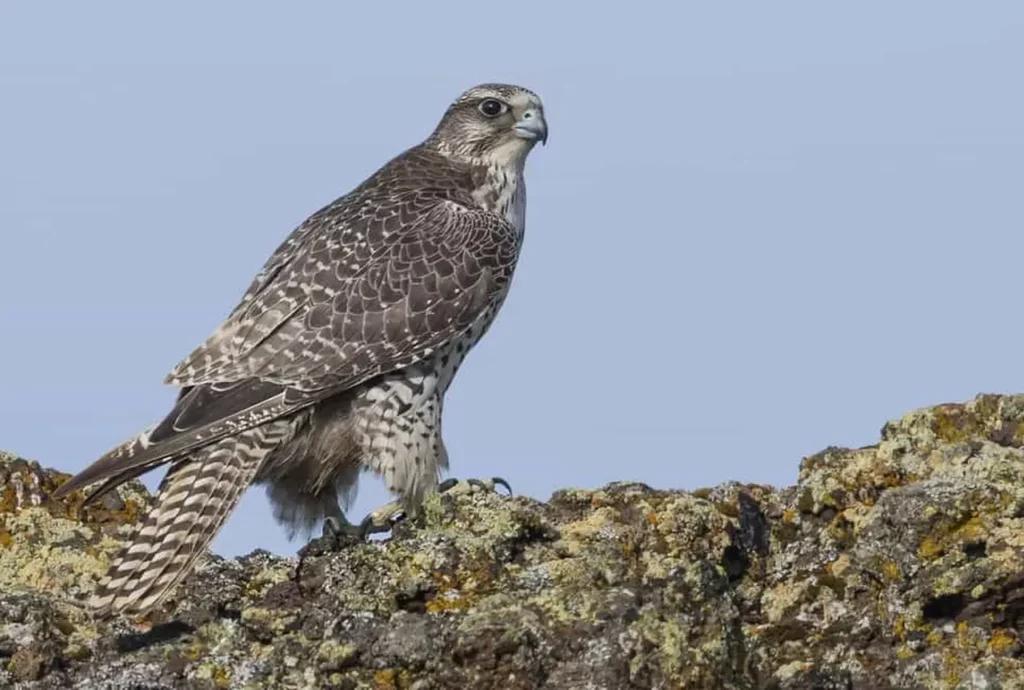
7. Golden Eagles
Although its average flying speed of around 28 to 32 miles per hour may not seem impressive, the golden eagle can suddenly dive onto its prey at a dizzying speed of 150 to 200 miles per hour.
However, its large size comes at the cost of some agility and maneuverability. It is entirely incapable of catching a particularly fast-moving bird while in flight. But it is capable of killing slower, larger prey such as sheep or goats. The national symbol of Mexico, the golden eagle, is the largest predatory bird in North America, with a huge wingspan and a body length of 3 feet.
One rare reason for not often encountering golden eagles is that they prefer rugged terrain such as mountains and canyons, avoiding densely populated areas or sprawling forests. If you happen to spot one, be careful not to take a feather as it is illegal and can result in heavy penalties from the U.S. Fish and Wildlife Service.
Similar to other predatory birds, golden eagles typically mate for life. Their courtship behavior involves a display of two eagles diving and circling around each other. Their nest, built by both eagles, is often used for many years and grows larger each season. Located on a rocky outcrop or tree, a mature golden eagle nest looks quite impressive – a massive heap of moss, grass, and sticks that is added to each year, increasing in size.
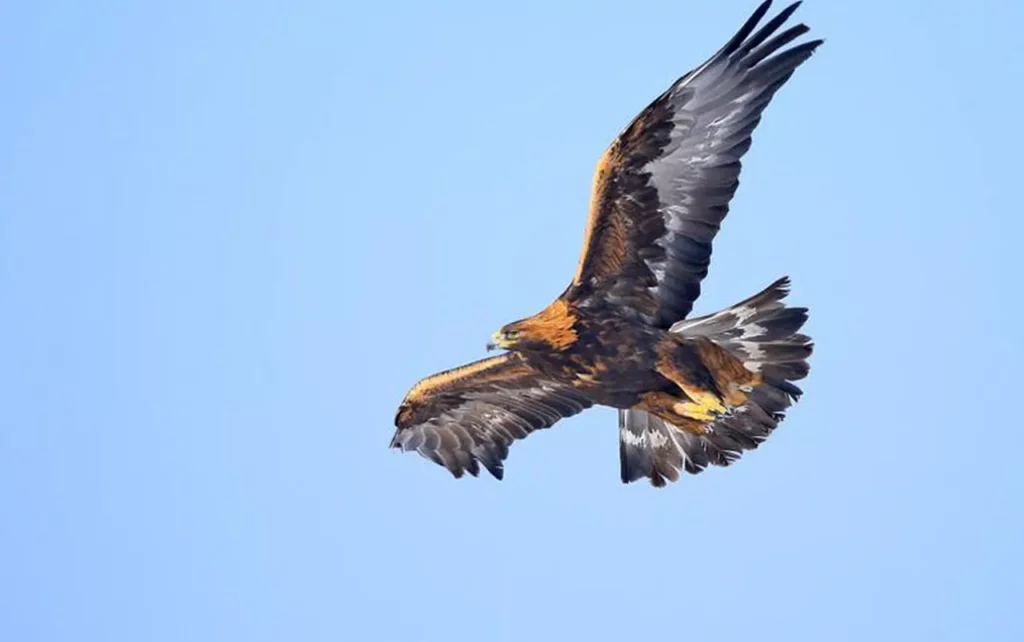
8. Saker Falcon
Saker Falcons typically appear on large grasslands in Asia and Africa to prey on rodents and smaller birds. This fearsome predator dives down onto its prey at speeds of up to 200 miles/hour, stunning it with a quick attack.
When flying normally, it can reach speeds of up to around 93 miles/hour. The Saker Falcon is an important part of some cultures to the point where it is considered the national bird of Mongolia and Hungary. With a wingspan of just over 4 feet, the Saker Falcon is known for its ability to chase prey horizontally. Its preferred diet includes pigeons and squirrels, so you may find them hunting in open spaces like desert edges or grasslands near trees and cliffs. When nesting, the Saker Falcon finds an old nest made of another bird’s sticks and lays eggs there. Typically, they will lay 3-6 eggs. Unfortunately, this species is on the endangered list.
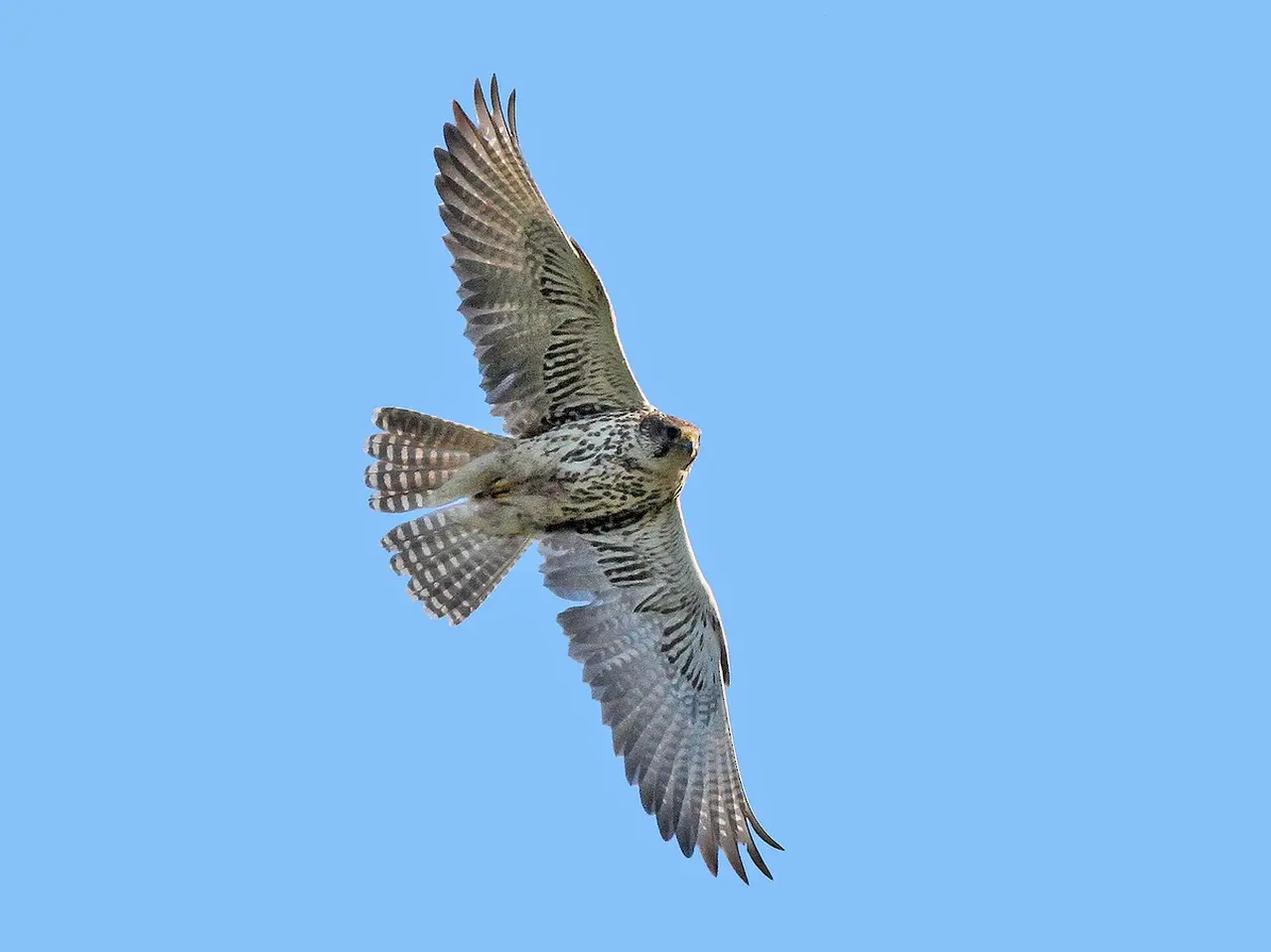
9. Peregrine Falcon
As an icon of hunting and culture throughout human history, this bird can reach speeds of around 200 to 240 mph when diving (and up to 68 mph when flying horizontally). To achieve such high speeds, the falcon is able to fold its aerodynamic wings back against its body to reduce drag. According to a study, it continues to make small adjustments to the position of its wings and accelerates until the moment of impact to successfully hit its target.
Combining its ability to process visual stimuli quickly and accurately with its incredible speed, the Peregrine Falcon is able to hunt fast-moving prey such as pigeons and mid-air singing birds. It is also fast enough to catch a rabbit. Even its nostrils are adjusted to withstand the air pressure when it dives, protecting its lungs from damage. While hunting, the Peregrine Falcon flies with its head tilted, helping it to bank towards the prey. This positioning helps reduce drag, bringing the bird to its desired location at the fastest possible speed. Truly a smart bird.
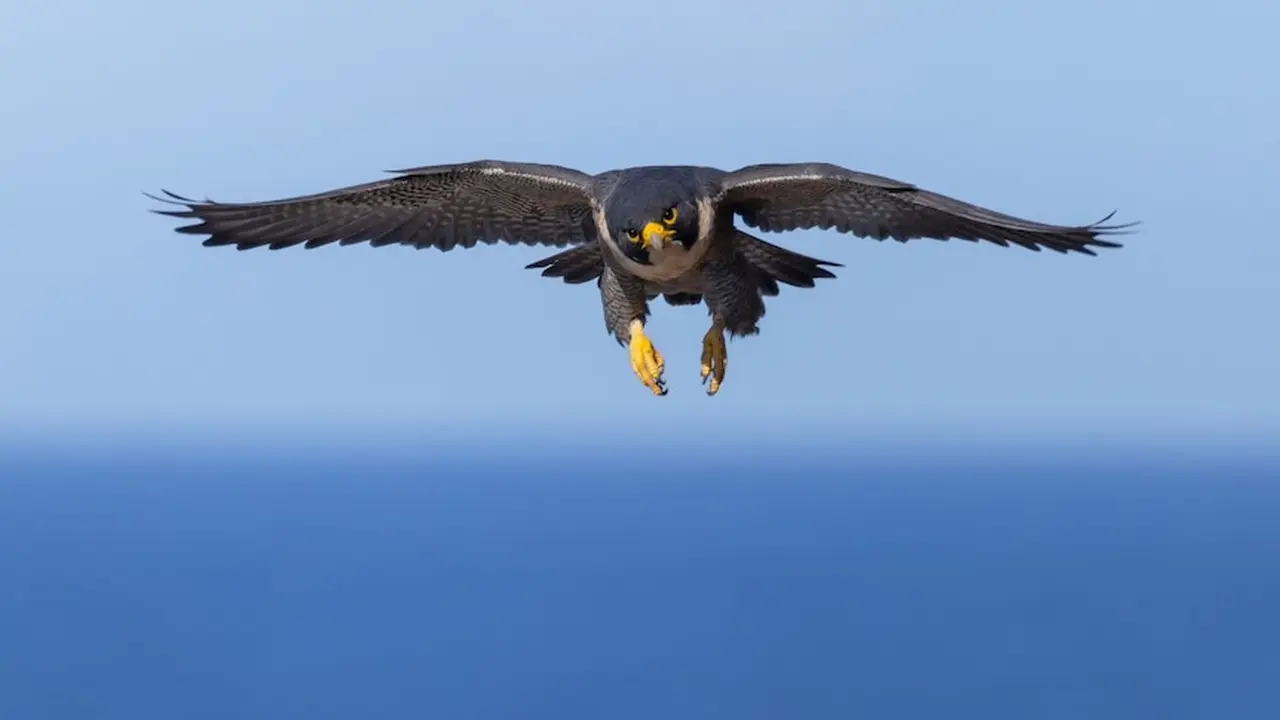
In conclusion, we hope this article has brought you valuable information about the fastest flying bird in the world. Stay tuned to discover more interesting facts with us.